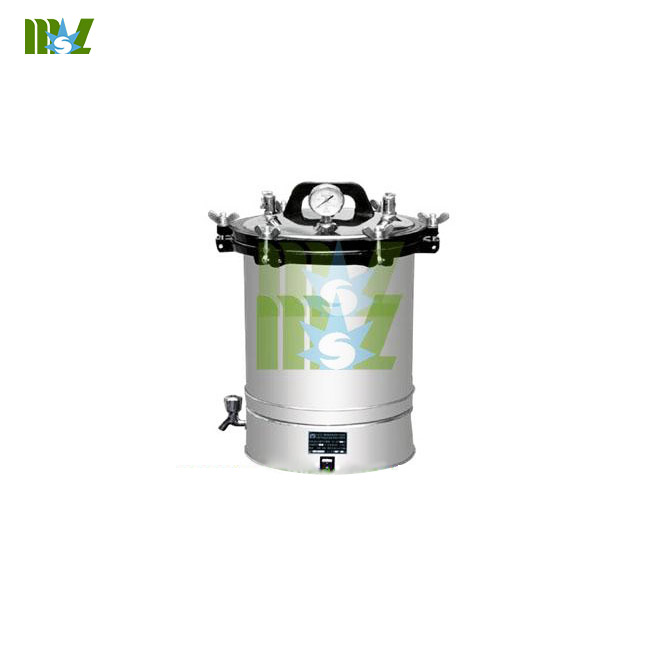A waste autoclave is a form of solid waste treatment that uses heat,steam and pressure of an industrial autoclave in the processing of waste.Waste autoclaves process waste either in batches or in continuous-flow processes.In batch processes,saturated steam is pumped into the autoclave at temperatures around 160°C.The steam pressure in the vessel is maintained up to 6 bar gauge for a period of up to 45 minutes to allow the process to fully 'cook' the waste.The autoclave process gives a very high pathogen and virus kill rate although the fibrous products which come from the process are susceptible to bacteria and fungus as they are high in starch,cellulose and amino acids.
Some autoclaves,also referred to as waste converters,can operate in the atmospheric pressure range to achieve full sterilization of pathogenic waste.Super heating conditions and steam generation are achieved by variable pressure control,which cycles between ambient and negative pressure within the sterilization vessel.The advantage of this new approach is the elimination of complexities associated with operating pressure vessels.However,steam that is not 97% saturated may not contain sufficient energy to kill the spores that may be on the surface of the items it comes in contact with.

Process results
In 'batch system" autoclave processes,the'cooking' process causes plastics to soften and flatten,paper and other fibrous material to disintegrate into a fibrous mass,bottles and metal objects to be cleaned,and labels etc.to be removed.The process reduces the bulk volume of the waste by ~60%.After 'cooking',the steam flow is stopped and the pressure vented via a condenser.When depressurised,the autoclave door is opened,and by rotating the drum the 'cooked' material can be discharged and separated by a series of screens and recovery systems.
In continuous flow autoclave processes,glass,stones,and metals are removed from the waste stream before the "cooking" process begins,thus saving considerable energy,labor and equipment costs.With this process,waste enters and the product leaves the autoclave without the loss of temperature or pressure in the vessel.The material moves continuously through the process via computer-controlled process conveyors.After the waste is loaded onto the initial conveyor,the entire process is automated and it does not require human intervention to clean the inside of the vessel.
In early systems,the primary product was cellulose fibres.This comprises the putrescible (rottable),cellulose and lignin elements of the waste stream.The fibres can be fed into anaerobic digesters to reduce the biodegradability of the waste and to produce biogas.Alternatively the fibre could be used as biofuel.
Some systems claim to wash out hydrolysed hemicellulose sugars and most of the protein as water-solubles.The remaining materials,after simple physical separation (trommel screen) has several valuable uses.One system claims to be able to dry the cellulose during processing using heat,and another system is able to dry the cellulose (much more economically) using pressure and steam kinetics.
After fibre separation,the secondary streams consist of mixed plastics,which have normally been softened and deformed which eases separation,a glass and aggregate stream,separate ferrous and non ferrous metals.The heat,steam and rotating action of the autoclave vessel strip off labels and glues from food cans leaving a very high quality ferrous/non-ferrous stream for recycling.
With the removal of water,fibre,metals,and much of the plastics,the residual waste stream for disposal may be less than 10% by weight of the original stream,and is essentially devoid of materials that decompose to produce methane.Systems in Europe meet and exceed all of the European waste treatment and recycling requirements.
The full process of loading,treatment and sorting is typically completed within 90 minutes.In a typical batch-type configuration,2 10-ton units operating side by side would treat 440 tons per day with time for preventative maintenance.Continuous flow systems are modular and are specifically designed to match the necessary capacity.
The size of the vessel varies between vendors.Experience shows that "small" vessels are not productive enough;while if the vessel is too large,the heavy weight of the vessel may cause equipment failures.
Related Posts
Principle autoclave tape
Autoclave tape is an adhesive tape used in autoclaving (heating under high pressure with steam to sterilise) to indicate whether a specific temperature has been reached......
- Home
- All Products
- Ultrasound
- Lab Equipment
- Blood cell analyzer
- Automated blood analyzer
- Biochemistry analyzer
- Veterinary blood analyzer
- Urine Analyzer
- Mindray analyzer
- Rayto IVD
- Blood gas analyzer
- Portable blood analyzer
- Blood coagulation analyzer
- Blood pressure analyzer
- Blood lactate measurement
- Handheld blood analyzer
- Microplate readers
- Testing equipment
- Surgery
- Beauty Equipment
- Vet equipment
- X rays
- Contact MSL




 Price is 8-20% Lower Than Other
Price is 8-20% Lower Than Other






